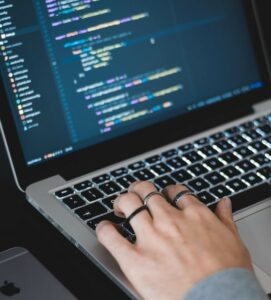Programming is pretty complicated, but it’s also one of the most fun things you can learn. Programming is cool because it gives people the power to create things that don’t exist yet. With programming, you can make an app that lets people order food from their phones or write a program that helps doctors diagnose diseases faster than ever before—or both! You can even build your own games and websites with code if you’re feeling ambitious. After all – Google, YouTube, sites where one can use offers like the Jackpotjoy Promo Code, Tik-Tok, IG, Telegram, even this website and all the others were coded, programmed. In short: everything you see online is created by programming.
If this sounds exciting to you, then keep reading in this lesson where we’ll start getting into what goes into writing programs.
Programs are everywhere

It’s not just computers that use programs. Many other machines and devices—from your television to your car to your microwave—are programmed, too. In fact, most of the technology we use on a daily basis is programmed in some way.
Programming is the process of using computers or other devices in order to complete a task, like sending an email or playing a game. You can think of a program as being a set of instructions for a computer or device; it tells it what to do in order for its function to work correctly.
There are many different kinds of programs
There are many different kinds of programs. Programs can be written in many different languages, and they can be used to run on many different devices, such as phones or desktop computers.
The kind of programs you use depends on the purpose for which it is intended. For example, if you want to write a simple calculator app for your smartphone, then you will probably use Java or Swift (both open source languages). But if you want something more sophisticated like an operating system or an artificial intelligence program then C++ would be a better choice because it’s faster than Java.
To write a program, you need to know the syntax of the language

To write a program, you need to know the syntax of the language. The syntax is the set of rules that govern how we write our code. For example, in Python you can’t use “=” on its own; instead, you have to use “==”.
In programming languages like Python and Ruby, every line has an indentation level associated with it—that is, how many spaces there are between this line and the previous one. If we’re not consistent about this (or do not use tabs or 4 spaces), our code will look terrible when printed out or read by other people!
Another thing: programming languages don’t always have a fixed meaning for operators like + or & . In some cases these operators mean something different depending on whether they appear before or after their operands (in other words: whether they’re used in prefix form).
Programming is all visualising how something will work
I’ve heard people say that programming is all about closing your eyes and visualising how something will work before you start writing it down as code. This couldn’t be more true. Programming is a creative activity, and you need to be able to visualise the end result before you can write a program that actually does what it needs to do—the same way an artist imagines their masterpiece in advance of putting brush to canvas.
You need to think like a programmer if you want to become one: anticipate how other programmers might think about and use the program you’re creating; understand why certain things are necessary or desirable for that context; anticipate future developments in technology that may impact your current project; and so forth.
